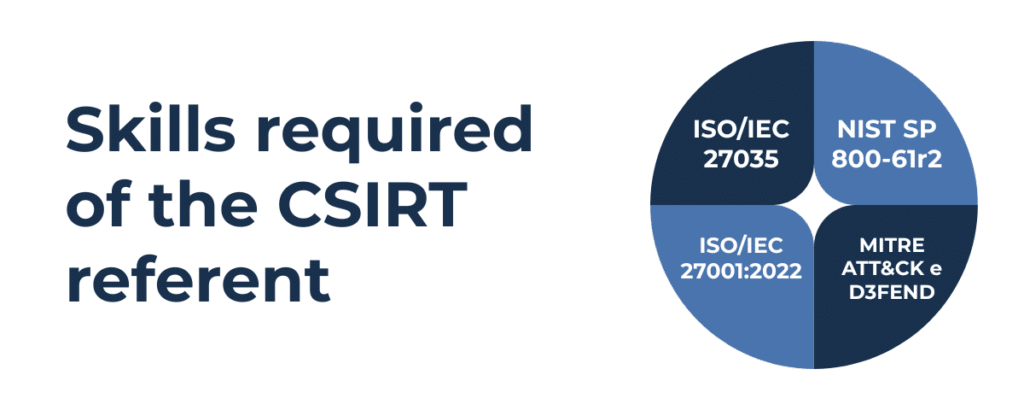
Organizations classified as essential or important under the NIS2 Directive must appoint their CSIRT Representative between November 20 and December 31, 2025.
The appointment, to be made through the ACN portal, must include one main representative and at least one deputy, ensuring 24/7 availability and operational continuity.
It is not necessary for the role to be internal: the regulation allows the function to be outsourced to qualified external providers or Managed Security Service Providers (MSSPs), provided that criteria of competence, availability, and accountability are met.
This organizational flexibility allows companies to comply with the new requirement efficiently, but it also demands strict contractual agreements on response times, notification obligations, and activity traceability.
With the implementation of Directive (EU) 2022/2555, known as NIS2, Europe takes a significant step forward in the maturity of cyber risk management.
Cybersecurity is no longer just a preventive defense activity, but a strategic function of organizational resilience. Within this new model, a key figure emerges: the CSIRT Representative, the operational element of the national incident response and coordination system.
In Italy, the role was formalized by the Determination of the National Cybersecurity Agency (ACN) No. 333017/2025, which defines its functions, requirements, and designation procedures.
The goal is to create a coordinated ecosystem among public entities, essential operators, and national CSIRTs, capable of ensuring timely and consistent management of cyber incidents.
The CSIRT Representative serves as the operational point of contact between the organization and CSIRT Italia. In the event of an incident, this figure ensures that every security event is managed and communicated in compliance with national protocols. It is not a formal or purely bureaucratic role but represents the decision-making core of the response, capable of combining the technical and regulatory dimensions during the critical hours of an attack. The CSIRT Representative is the technical counterpart of the NIS2 Point of Contact, another key figure who maintains institutional responsibility for communications with ACN.
It is important to note that the roles of CSIRT Representative and NIS2 Point of Contact cannot be held by the same person.
The distinction between the two roles introduced for the first time explicitly by the Italian regulatory framework clarifies the chain of command during crises, reducing ambiguity and decision-making delays.
Required skills: technical expertise, governance, and operational readiness
The CSIRT Representative must combine advanced technical expertise with a deep organizational understanding.
Experience is required in incident response, digital forensics, threat intelligence, and SOC management, together with knowledge of international standards such as:

Incident management under NIS2: a precise timeline
The NIS2 Directive establishes a three-phase procedure for reporting significant incidents:
The CSIRT Representative is the director of this process: they receive and classify the event, coordinate technical teams, communicate with the CISO, DPO, and management, and oversee containment actions.
They operate in synergy with the SOC, whether internal or external, and with telemetry and correlation platforms (such as SIEM, SOAR, and MISP), ensuring information consistency throughout the decision-making chain.
Within the corporate structure, the CSIRT Representative reports to the CISO, but maintains a direct communication channel with both the NIS2 Point of Contact and CSIRT Italia.
In SMEs, the role may coincide with that of the CISO; in larger organizations, separating the two functions is preferable to ensure segregation of responsibilities and greater operational efficiency.
It is crucial to define roles and communication flows through RACI matrices, escalation procedures, and internal communication protocols, transforming incident response into a structured and repeatable process rather than an emergency reaction.
Beyond operational management, the CSIRT Representative plays a decisive role in measuring the organization’s cyber resilience.
Their activities feed key KPI and KRI metrics such as:
These metrics are not merely monitoring tools but serve as maturity indicators for internal audits, continuous improvement processes, and NIS2 compliance reporting.
The CSIRT Representative embodies one of the most tangible changes introduced by NIS2.
It symbolizes a cybersecurity approach that is no longer purely defensive but oriented toward risk governance. The mandatory appointment, traceability of actions, and defined response timelines transform incident management from a reactive activity into a permanent function of organizational resilience.
Ultimately, the CSIRT Representative is the guardian of digital resilience: a professional ensuring that every threat is managed methodically, every notification is sent on time, and every crisis becomes an opportunity for learning.
In an environment where attack speed often exceeds regulatory adaptation, this figure operational, competent, and coordinated makes the difference between a managed risk and a suffered one.
ai.esra SpA – strada del Lionetto 6 Torino, Italy, 10146
Tel +39 011 234 4611
CAP. SOC. € 50.000,00 i.v. – REA TO1339590 CF e PI 13107650015
“This website is committed to ensuring digital accessibility in accordance with European regulations (EAA). To report accessibility issues, please write to: ai.esra@ai-esra.com”
ai.esra SpA – strada del Lionetto 6 Torino, Italy, 10146
Tel +39 011 234 4611
CAP. SOC. € 50.000,00 i.v. – REA TO1339590
CF e PI 13107650015
© 2024 Esra – All Rights Reserved